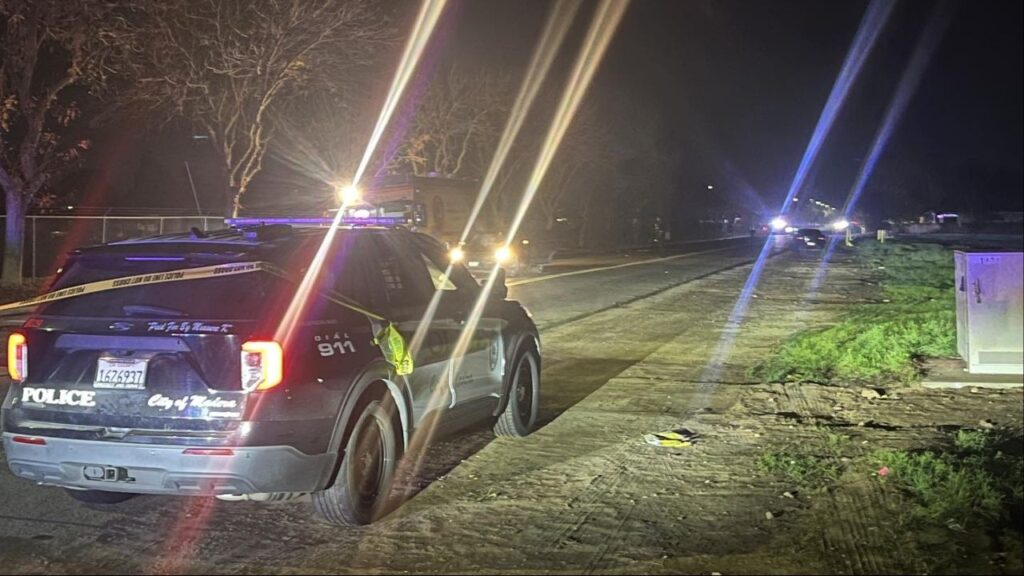Share
Fresno Unified School District has released an eye-opening report that paints in stark numbers how poorly students are performing academically and the huge challenges they face in being ready for college and career.
Listen to this article:
However, district officials consider students who test one grade level below at the start of the year to be on grade level. About 32% of the students tested in reading and 39% of students tested in math fell into that category.
Some students lagged by as many as 10 grade levels. Of the 2,841 sophomores tested in reading, about 28 had the same reading abilities as kindergartners. And of the 2,328 sophomores tested in math, about 14 were at the kindergarten level.
The assessment delivered particularly grim news at several high schools. Less than 30% of the students tested at Bullard, Hoover, McLane, and Roosevelt started the year at or above grade level in math. In fact, at McLane, less than 4% of those tested were at or above grade level for math.
Fresno and Sunnyside highs did not participate in the assessment testing.
See How Your School Did
(GV Wire/Hannah Reilly)
Far From Meeting College/Career Goal
District leaders, determined to take Fresno Unified from the bottom of state and national rankings, are turning to a number of strategies. Making education a priority for the Fresno area is one, and that will mean getting buy-in and support from the entire community.
An education advocate praises Fresno Unified for a new spirit of transparency about student performance and efforts to engage the community, but points to the need to rethink expectations for student success and making sure there is sufficient support available from teachers and counselors.
One trustee says remaking the district will take more than new literacy programs and assessment programs. Trustee Terry Slatic contends that until there is a culture of accountability, especially at the administrative level, and students learn grade-level curriculum before they are promoted, the district’s struggles to meet its goal of graduating students prepared for college or career will continue.
And that goal has slipped further out of reach: The 2019 California State Dashboard showed that after three years of gains, the percentage of Fresno Unified students prepared for college or career had dropped back to 38%. Over the past four years, it has never exceeded 50%.
Superintendent: We Need Your Help
Fresno Unified, the state’s third-largest school district, consistently performs academically near the bottom in comparisons of large urban school districts nationwide and among California districts. It ranked near the bottom among large urban districts in the most recent The Nation’s Report Card of fourth- and eighth-grade reading and math testing. So the recent i-Ready assessment reports weren’t exactly surprising.

Improving academic performance will take a lot of hard work on the part of students, parents, teachers, and the district, he acknowledges.
“It’s hard to ask people to come and partner with us in this effort,” Nelson said. “So I have to build a groundswell of people who believe that we’re giving the full disclosure and they understand.”
Transparency Is a ‘Great First Step’
Transparency is important to building trust in the community, especially when a school district needs support to help reach its goals of preparing students for college and career, said Mayra Lara, a senior practice associate at Education Trust-West. The Oakland-based nonprofit advocates for educational justice, especially for students from disadvantaged communities.
“I think that being transparent is a great first step … (but) I want to be frank in saying that highlighting the problem is often the easiest thing to do,” she said.
The hard work is what follows: Figuring out the best practices and policies and implementing them, making sure that all students have access to a rigorous curriculum, and then providing them with necessary support such as tutors and counselors so they can succeed.
Shifting The Curriculum Focus

By making the A-G requirements the default curriculum for high schoolers, the burden shifts to educators to make sure students get the support they need to succeed, Lara said.
“So that includes everything from changing the way that master schedules are set up, for example, to when tutoring is made available, to the data systems that exist in a school site to be able to disaggregate data by the different student groups … to ensure that the mechanisms are set up to support student success,” she said.
Districts need to think carefully about how best to use supplemental funding, but also about how to seek help from the community to get support for students who need it most, Lara said.
“Some of that is … using supplemental funding to get increased counseling,” she said. “And some of it is being very strategic about building partnerships with community-based organizations, with institutions of higher education, with local industry partners.”
New Diagnostic Testing Tool In Use

The program has been adopted in districts across the nation. Clovis Unified, which saw substantial improvement with elementary school math scores at several pilot schools, decided this year to expand the program to all elementary schools.

“Not every kid struggles with the same thing, and it’s important to recognize that. And so it gives us a very useful tool to be able to provide more specialized interventions at the student level. We see more and more of the personalization of learning.”
Student Assessments Are Real-time
The diagnostic tool, developed by a Massachusetts company founded by educators to develop instructional materials, helps teachers more efficiently analyze the areas where a student is struggling and then design an appropriate lesson. And because there are several assessments during the school year, teachers can make adjustments earlier. That’s a change from assessment tests that are typically done at the end of the school year, when it’s too late to intervene with struggling students.
Fresno Unified is spending about $1.2 million this year on i-Ready, including three assessments in math and English for students in grades K-12, online lessons and teacher resources, district spokeswoman Vanessa Ramirez said.
Districts that have access to “robust” data systems can analyze not only individual students’ performance, but also look for trends at the school level and with subgroups of students, Lara said.
She noted that a Los Angeles County school district has created an in-house data system that allows schools to pinpoint student performance issues. The district has identified teachers who like working with data to be the lead at their school, and is paying them extra to help school leaders understand the data, she said.
Goal Is Closing The Gap
The i-Ready assessments also will help teachers talk to parents about their child’s academic progress, said Lindsay Sanders, Fresno Unified’s chief of equity and access.
“It’s something we haven’t had in the system, not for the fault of no one wanting to do it, but because the technology is more advanced (now). So i-Ready provides not only the student and the parent and the teacher … a criteria test score that says ‘you’re at third grade and to get to fifth grade, this is what we would expect you to grow in a year. But this is what you need to be able to do in three years to close that gap.’ ”
Kids Are Ready for i-Ready
At Ewing Elementary in southeast Fresno, fourth-graders in Yureli Mandujano’s classroom barely look up from their laptop screens when visitors enter. Students in the dual language immersion class are hard at work on their interactive I-Ready math interventions that include cartoon figures guiding them to their next lesson and a variety of lessons designed to sharpen their multiplication skills.
Fresno Unified Using i-Ready from GV Wire on Vimeo.

The district’s i-Ready contract provides six hours of professional development for each teacher: two hours before school starts, two hours after the first diagnostic, and two hours after the second diagnostic, Ramirez said. Teachers are surveyed after each session, she said. In addition, the district has done classroom observations.
Through the i-Ready assessments, Mandujano said, she realizes that how math lessons are scheduled throughout the year affects how well students are prepared for math lessons as they grow older.
Instruction of geometry for each grade level comes at the end of the school year, when state assessment testing and other activities take time from math lessons, Mandujano said.
“I’m seeing the pattern that we’re not hitting geometry very much, and because of that I have fourth graders who are at a first-grade level in geometry, because that’s the very last thing we hit,” she said. “It’s a lot of ‘ah-ha’ moments, actually.”
I-Ready Lessons Only in English
If there is a downside to the program, it’s the current lack of a Spanish language version of the English language arts assessment and reading and math lessons, which means students in grades kindergarten through second miss out on the intervention lessons that i-Ready provides. Older dual language immersion students have the English skills needed to tackle the math and reading interventions.

I-Ready is a great supplemental tool, but it will never replace teachers, she said.
“The credentialed teacher is the best intervention for students, even over a computer, because we feel the kids, we see the kids,” Torres said. “The information we get from the diagnostic is enough information for a teacher to create her own intervention for students.
“My big message to my dual immersion teachers in the primary grades is, you take those 45 minutes that our students would be using every week for the i-Ready, and you build cultural proficiency. That is your opportunity to sing, to read cultural books.”

Kids Are Having Fun Learning
The computer program clearly is popular among Ewing’s students, Torres said. She learned that one class had logged well above the 45 minutes they are supposed to devote weekly in school per subject (reading or math), but the teacher assured her that the scheduled class time had not increased. Students probably were logging onto i-Ready from home, either on a school-assigned laptop or possibly using a parent’s cell phone, Torres said.
The program also is available to students in one of Ewing’s two after-school programs, she said. English language learners may be inspired to increase their language skills so they don’t miss out on the fun of i-Ready lessons that the other after-school students are doing, she said.
And parents can help keep their kids on track since teachers can share the results of i-Ready diagnostic tasting, which helps pinpoint learning gaps, Mandujano said. “It was so clear for parents to see that data … It’s accessible at home, so I also tell them, another thing you can do is make sure they’re logging in at home and they’re practicing 15 minutes at home every day,” she said.
Because the program adapts to each student, time spent using it helps them continue to learn and progress, Mandujano tells parents.
Parents Are Part of The Equation
And parents, even more so than teachers and principals, are the key to student success, Nelson said.
“We need to partner with our families to be like, ‘Hey, this is a priority.’ I mean, one of the really seminal aspects of it is if you don’t send your kid (to school) every day, it sends a message about what you value. … To some degree it feels as though many in our community sometimes orient to the district as some type of respite care, like, ‘Just get the kid out of my house for eight hours a day.’
“And that has to change. They have to understand what we’re about and to partner with us in this effort. So that’s why I’m putting some of this stuff (assessment results) out.”
Getting parents on board is part of Nelson’s long-range plan for the district, which he is rolling out in incremental steps. The first was to smooth out relationships between the district and employee unions, which had been rocky for some time. The fast-paced negotiations over the multi-year teachers contract this year was a significant accomplishment, he said.
Needs Community Buy-in
Now, Nelson said, he’s turning his attention to re-establishing community support and respect for schools and teachers. Although it may not be universally recognized, Fresno Unified does a good job at focusing on specific areas and making improvements, such as third-grade academic performance. Studies have shown that students who are lagging behind their classmates by the third grade struggle to catch up and are at greater risk of dropping out of high school.
But the i-Ready assessments show that academic performance apparently peaks in the third and fourth grades for Fresno Unified students, and slides downward after that.
“Are we doing enough? I think you’ll see we’ve done some things,” Nelson said. “I mean, mathematics in particular in middle school of late we think are showing promising signs, but we don’t want to chase a million different balls either.”
Fresno Unified students face many challenges, but it’s certainly not the only district that has them, and students are ill-served if district officials don’t figure out ways to help them overcome their challenges, Jonasson Rosas said.
“We can’t just use them as excuses,” she said. “And I think that that’s definitely the mentality that I have and I think my district leadership has, that we acknowledge things, the context of the situation, and how can we make sure our kids thrive despite the challenges.”
Literacy Program Expanded
To help students be academically successful, Fresno Unified continues to test new strategies. The district saw success in the first two years of its African American Academic Acceleration summer reading program, so it’s partnering again with Springboard Collaborative on a 10-week afterschool pilot program for students at Easterby, Kirk, Lincoln, Pyle, Roeding, Thomas, Turner, Vinland, and Williams elementaries. Each school can have up to three classes with 15 students per class.
The program, which will cost the district up to $450,000, is scheduled to start in January. If students in the program increase their reading proficiency, it will be expanded beyond the nine sites but may continue to be 10 weeks in duration, Ramirez said.
The program will focus on African American students who are behind their class by one or more grade levels, she said. Teachers will make at least one home visit during the program to coach parents on how to work with their kids on reading, and they’ll have materials translated into other languages in case the parents aren’t English-speakers, she said.

“Every new program … has been the panacea,” he said. “But we keep getting worse and worse because no one’s ever held accountable for these things. It’s that simple. So is this going to fix anything? The answer is no. Is it going to help me get better data on how bad we’re doing to be able to present to the superintendent? Yes.”
Slatic: No Success Without Accountability
A lack of accountability, from the superintendent’s office on down, is why so many Fresno Unified students are behind by so many grade levels, Slatic said. The district’s policy of 100% social promotion means that students are moved to the next grade level, even when they are academically unprepared and struggle to catch up.
The percentage of students who moved on to the next grade level this school year? One hundred percent.
“It’s not the myriad of problems with academics, but the people who are in charge of fixing that,” Slatic said. Nelson is the “CEO of a billion-dollar business. He has senior staff to fix that. He doesn’t hold them accountable, and then they don’t hold their people accountable.
“So this is an accountability issue. It’s not an academic issue. Sanger doesn’t have this problem. Clovis doesn’t have anything related to this problem.”
Achieving student success, however, won’t occur by blaming individuals over a perceived lack of accountability, Lara said. Ultimately, she said, there has to be recognition that the “whole ecosystem” will need to engage to help students achieve success.
Educators need to be rooted in communities surrounding schools, must get to know the families and the issues they are facing, to understand how best to help students succeed academically, Lara said.
“And it really takes understanding the community and what it is that the community wants, wishes for, expects of its schools, and for the schools to then work to being a system that is responsive to community needs.”

Categories

7-Eleven Inc Says CEO Jeo DePinto to Retire


















